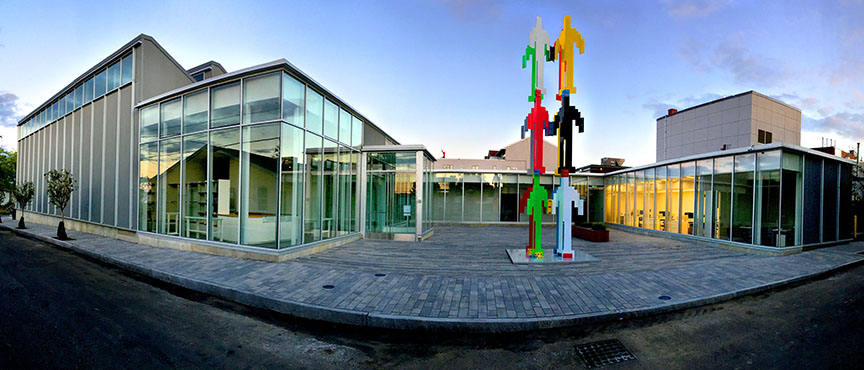In June of this year, the Center for Maine Contemporary Art moved into its new building in downtown Rockland, a work by the architect Toshiko Mori that sought to capture the legacy of Maine’s influence on American art while working with the vernacular of the working waterfront of Midcoast Maine. Poised to provide both an artistic and economic boon to the region, I was curious as to how the new CMCA is faring after its first few months. I spoke with Executive Director and Chief Curator Suzette McAvoy to get her reflections on CMCA’s new presence in Rockland, hear her perspectives on opening the space to new and wider audiences, and to see how she envisions CMCA’s role in defining the contexts of Maine art.
Jenna Crowder: First, congratulations on a beautiful building. It is really quite a stunning example of architecture that seems to accomplish many things — it creates a new, large-scale space for installation and large works; it works with both the vernacular of a working waterfront (the corrugated steel recalling shipping containers) and the glass nodding to an almost utopian ideal where the audience is already interacting with the work—
Suzette McAvoy: Yes, that’s definitely intentional.
JC: And I can also see the subtle nods to other major national art institutions, like the sawtooth skylights and concrete floors reminiscent of Dia:Beacon’s aesthetic, for example. What has the reaction to the space been?
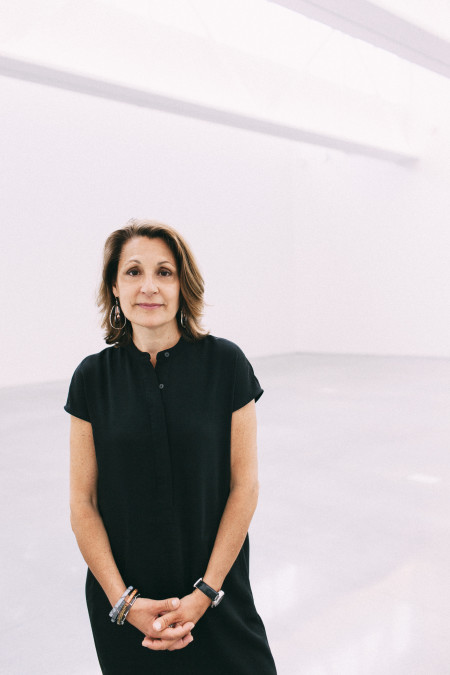
SM: Yes, absolutely. Some of the things that you mentioned are all things that were certainly considerations. The idea of the building was to really turn a traditional museum inside out. Instead of the imposing facade of the sort of high temple to art — if you think of the Metropolitan Museum of Art or the Philadelphia Museum of art, they’re these greek temples with very steep stairs going up to them — we wanted to really bring it down and interface with the community. So it’s all on one level, it’s all on the street level. The courtyard allows people to enter the museum space before even coming inside. It’s surrounded on three sides by glass, and that’s really to be completely transparent about what we do here at the museum, even the administrative offices are all visible, so you see the people who are working there. It’s really trying to dissolve that sense of distance between the art and the public, and really make it for people to feel that art is part of life and part of the Maine community, because all of the artists that we show are part of the Maine community. They’re all artists that have strong ties to Maine and are really part of the whole fabric of Maine life.
JC: Mainers are, rightly so, incredibly proud of the accomplishments that Maine artists achieve. Sometimes, though, this pride seems to verge on territoriality, where one can detect an implied litmus test of who “qualifies” as a Mainer and who’s a tourist. I’ve even heard people go so far as to suggest that Maine artists should only work in Maine, and artists “from away” should stay away. How do you as a curator seek to work with those notions or attempt to broaden the definition of what contemporary Maine art is and can be?
SM: One of our goals here is to really show the breadth and the variety of art that’s connected to Maine — that it’s not all the traditional landscapes and seascapes. There’s as much diversity within the contemporary art being made here in Maine or by the artists connected to Maine as there are in the broader contemporary art landscape globally. That many artists here in Maine do show and sell their work internationally, we really felt that by providing this new venue that it communicates through the building itself that this is a very contemporary institution and that we’re really showing work that’s at a serious, high level. The exhibitions that we do, the work that we show…we really strive to present them in a way that they can really hold their own in any institution anywhere in the world, and it’s really that level that I know is here. We see it as our mission to bring that to the wider public, to show a much broader, diverse public all of what is going on.
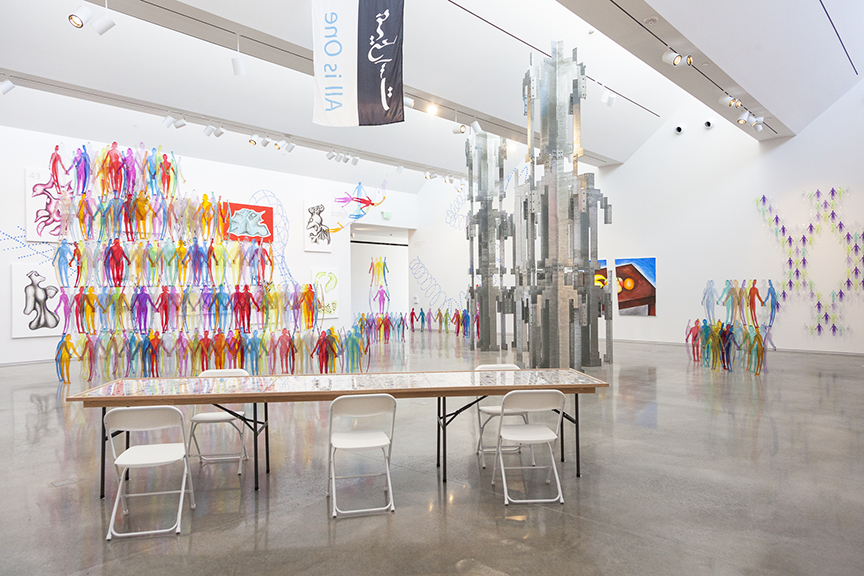
JC: Part of CMCA’s mission is to act “as a current and future catalyst for carrying forward Maine’s exceptional legacy in American art”. How would you describe this?
SM: Maine has an incredible legacy in American Art. Going back to 1847 when Thomas Cole came to Maine for the first time — he was cutting edge American art at the time. He was as contemporary as you could be within American art in the 19th century. Ever since him, there’s been wave after wave of high-profile, important, influential American artists, from Frederick Church to Winslow Homer to Marsden Hartley, to the Zorachs, to John Marin, to the Wyeths, to Louise Nevelson, Robert Indiana, Alex Katz, Lois Dodd, right up to the present day, with people like Jonathan Borofsky and Don Voisine, and others that are here and working here. And so Maine art is intrinsically a part of American art.
JC: What is it about Maine that you think artists like Ethan Hayes-Chute or like Rollin Leonard, for example, bring with them when they’re in Berlin or Los Angeles, respectively? Do you think there’s something about the Maine experience that informs the work that they’re making now?
SM: I do think that most of the artists that I talk to really value in Maine the sense of isolation that is necessary for the studio work. They really value their time in Maine in part because it allows them to be close with nature, and be working in a beautiful, inspiring environment. Even if the work itself is not informed by nature, it’s that sense of having an aesthetic environment in which to work and a sense of solitude that Maine provides. I do think that in Maine there’s still a lot of value to craft and hand work. I don’t know if it’s something that’s really definable to Maine, but it is certainly something that I see as a character of work that’s being done here. There’s a deep sense of quality and craftsmanship to the work that’s being done that I think is highly valued here in Maine. And not just in the arts, but in boat building and all of the traditional crafts — people here are handy!
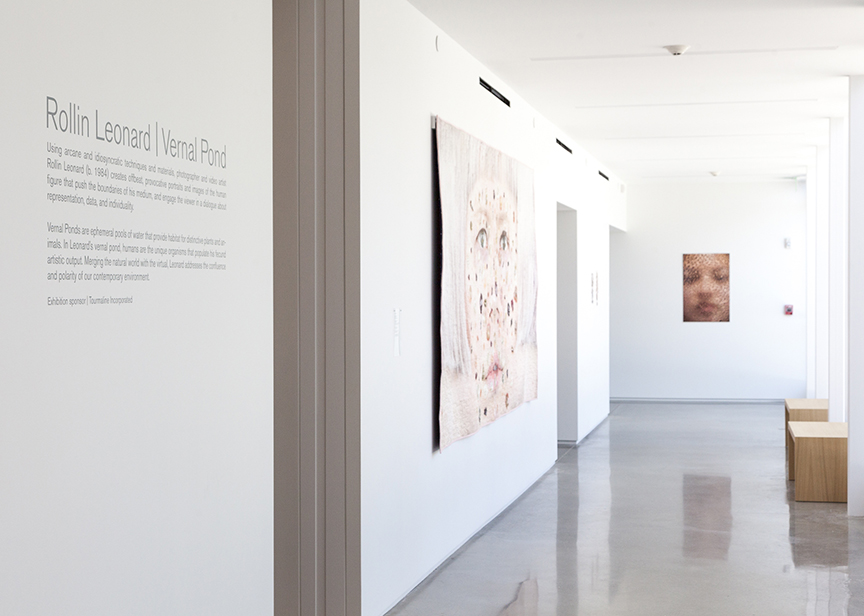
JC: I agree about that sense of isolation and solitude. I’ve had many conversations in which people will say, “I didn’t know so-and-so worked (or lived) in Maine;” there really is that sense of artists coming to be with nature, be alone and have that—
SM: Yes, and the work… I always say Maine is the place where the work gets made. It’s not necessarily a place where the work gets sold. And we’re hoping it’s a place where the work gets shown. At least! So, in that sense, we’ve opened this building and people have been coming out of the woodwork, especially artists because it’s become a magnet — and that’s what we’ve hoped it to be — a place where artists feel they could show their work, that they feel informs their work, and educates them about the work by their colleagues that is being done in the state that they may not have been aware of.
JC: So how do you see it not only as a catalyst for artists as you’ve just described, but for visitors and even potentially other institutions?
SM: Yes, absolutely. So in addition to the artists, who are one part of our audience, a big part is also the general public, school children, and students, so another real goal is to show the young people of Maine a building like this, to have the experience of being in a really beautiful, contemporary building, to be able to see really high quality work by contemporary artists that they could aspire to — to know that Don Voisine is from Fort Kent, Maine, and went to school at the Portland School of Art, now MECA. These home-grown, home-taught artists now show internationally. I think it sets a bar and an example that students can respond to or be inspired by. I also see that having a really state-of-the-art building and exhibition space will hopefully allow us to have more partnerships with other institutions. Even here [for the Don Voisine show] we borrowed a piece from the Colby College Museum of Art, and having that kind of exchange is something that we weren’t able to do in our former space.
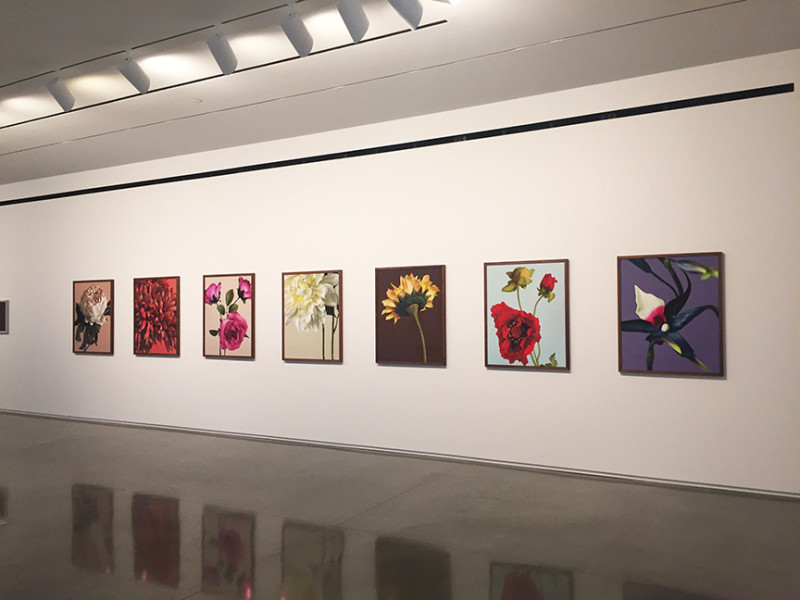
JC: CMCA has stated, in particular, that it has a “focus on the art of this generation and the next” a desire to “serve and inspire…young creative people from the region”. Rollin Leonard is a great example of a young artist making highly contemporary work, who was based in Maine for quite a while. Who are other young artists you’re looking at these days?
SM: We have our biennial coming up, which has a number of young artists, including Andy White, Cole Caswell, and Sarah Bouchard. We’re always looking and always open to proposals, we encourage all artists to become artist-members so that their work gets put on our artist directory that brings their work to not only our attention but to a global community, and to submit to our biennial exhibition because it is an open juried exhibition. Anyone can apply that has a tie to Maine, and not only does CMCA staff see the work, but also the outside jurors see the work. Even if they’re not selected for the biennial, the work has been seen by those jurors for, perhaps, other opportunities.
I would say that another big goal of ours is, by creating this contemporary center in Midcoast, was to really be part of attempting to add to a community, to create a community where young people would want to live and work in. And not just young artists — one our our goals was to be very cognizant of the fact that Maine has an aging population, and that if Maine is going to survive into the future — and therefore if CMCA is going to survive into the future — we’re going to have to attract young people to the Midcoast and not just the southern tier. That all of Maine is going to have to increase its population, draw more young people. It was really one of our goals to try to cement the Midcoast as a community that will attract and retain young people. I think our progressive, forward-looking programming and the kind of art we show, the kind of educational programs that we offer, are things that are not only appealing to younger generations, but are of particular interest to them.
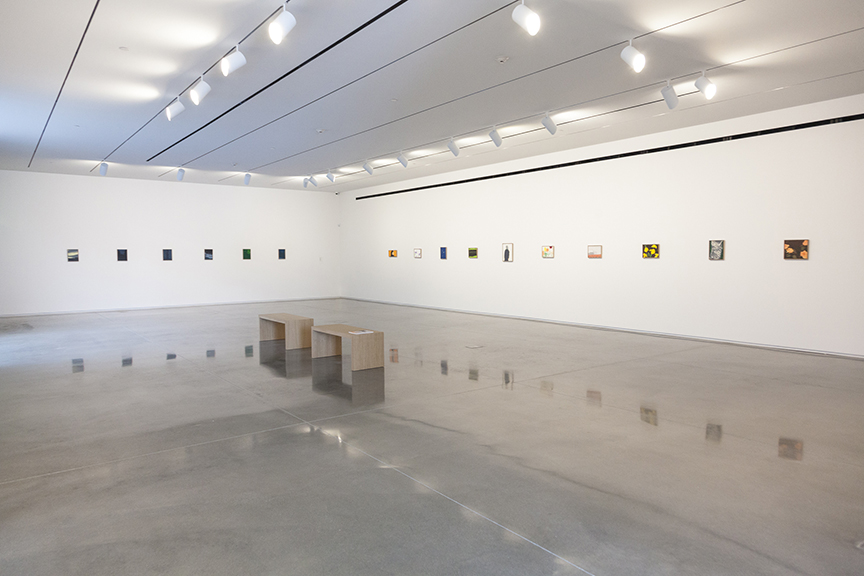
JC: I was looking at the exhibitions from the opening in June through the upcoming biennial, and there is a refreshing parity in gender representation. I think I counted and it was exactly equal among men and women — but I did notice that there is only one person of color, maybe two. I’m wondering how you see CMCA’s role in various areas of diversity and how you see CMCA potentially bringing in more artists of color, for example.
SM: Maine is ethnically…not very diverse; it’s 98.5% white? And if our mission is restricted to artists with strong ties to Maine, it naturally narrows the pool in terms of artists of color. It is certainly something that we’re aware of and we would like to try to broaden that. We are doing a show with David Driskell in the spring, for example, but it’s certainly something that as a state, it will be important to address.
We also see diversity in terms of not just ethnicity and gender, but also diversity in terms of aesthetic approach, medium, and stylistic [approach]. We also try to be really conscious of showing diversity artistically whether or not that plays out in gender and ethnicity. Even the idea of, in Maine, showing abstract work like this [gesturing to Don Viosine’s work] is considered a stretch for some, but we very conscious of trying to give some sense of parity or balance to shows of sculpture, shows of photography, shows of painting, as well as shows of women and men, and when it’s appropriate and makes sense, ethnicity as well. It’s something that’s definitely on our radar in terms of some of the new ethnic communities within Maine and looking at the kind of art that’s being produced, whether it’s a traditional folk-style art or contemporary art, within some of these cultures.

JC: I would hope within the new space, bringing greater focus to membership and to the biennial could potentially change that pool.
SM: I hope so, yes. Definitely. By broadening both our audience and the people that we’re serving, I think and I hope that we’ll then increase the diversity [among artists and visitors].
JC: Have you noticed yet how the visitorship has changed with the move?
SM: Yes. It’s something that we, the staff, are daily delighted at — the fact that we see so many people here and that people are coming. At our former space in Rockport, we would have 200 people show up at an opening, and then there would be very little activity — we were really a destination. You had to find us there. We were off the beaten path and it was primarily the art community that we were seeing: artists, supporters, and fans of contemporary art. But here, it’s a much broader, general public. It’s definitely more diverse in terms of ages, or whether visitors are tourists in addition to our traditional audiences. We’ve been open now since June 26th and we’ve had almost 10,000 visitors in July, August, September (the first three months) and our biggest year in the last five years that I know of in our former space was 9,000 in 2012, which was our 60th anniversary year. So this is huge: just within our first three months, we’ve surpassed our visitation. We’re really happy about that.
JC: Because of the street-level view, because it’s so close to Main Street, and because there’s so much glass, do you find that you’re also getting people in who don’t identify as art lovers, maybe people who are just curious about what’s here?
SM: Definitely, definitely. Especially because of First Friday, actually. We can now participate in First Friday and that’s been a huge boon for us. One of the reasons that we really wanted to move to downtown Rockland was to participate.
JC: So having had these hugely successful first few months, what’s your hope for the rest of the year and into the future?
SM: It will be interesting to see what happens. We opened in the height of summer, so we’re all anxious to see how the winter goes. Again, one of our goals was to be able to program through the shoulder seasons and through the winter for the local community as well as the student community. My goal is to really keep up this momentum and to continue to thrive financially: we’d like to close out the capital campaign — we still have just under a million to go before next June — so we’ll be actively fundraising in order to do that, because we’d like to move forward without debt.
I really look forward to the exhibitions that are coming up: the Biennial, we’re going to be doing a show with the artist Sam Cady following that, and a print show with David Driskell, and then next summer will be the artist John Walker. There’s a lot to look forward to. And the art community in Maine just keeps opening itself to us — we see more new faces, more artists, and more people who find out we’re here. There’s a lot of possibility.
The Center for Maine Contemporary Art is now located at 21 Winter Street in Rockland, Maine. The upcoming 2016 Biennial will open on Friday, November 4th, 2016 with a reception from 5–8pm.
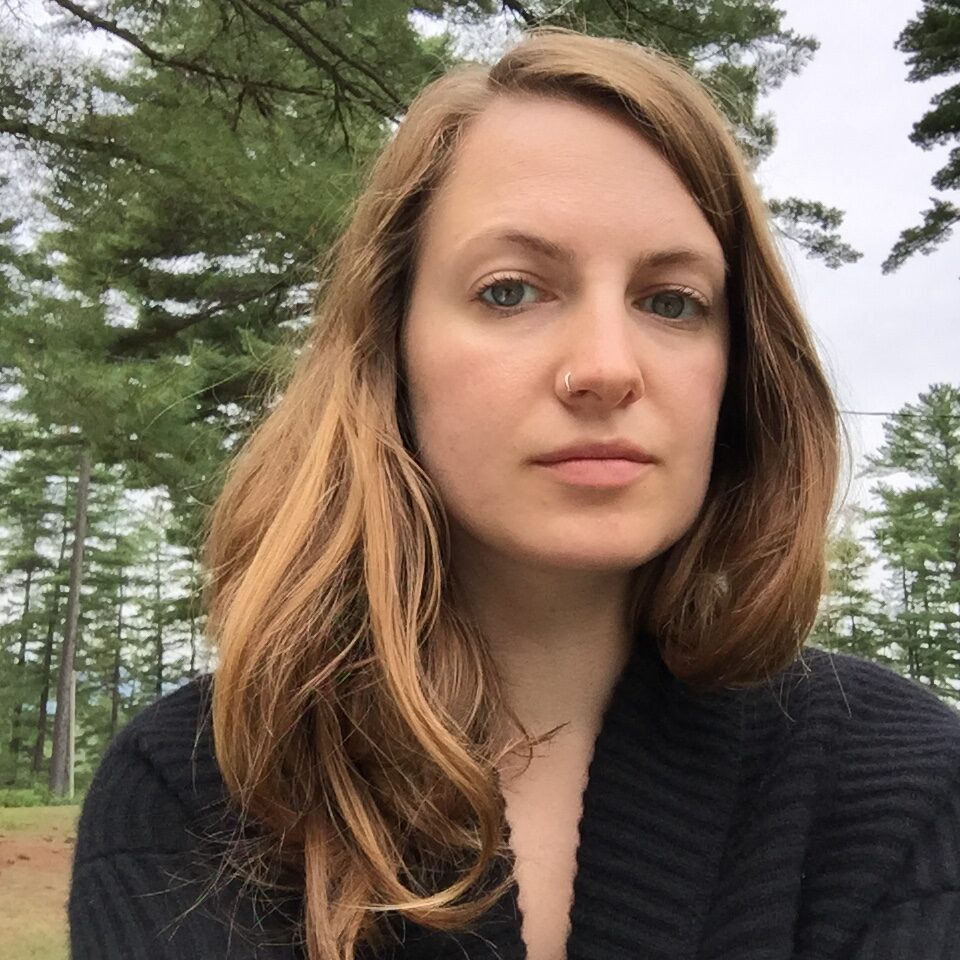
Jenna Crowder, Co-Founding Editor at The Chart, is an artist, writer, and editor. Her writing has been published in The Brooklyn Rail, Art Papers, BURNAWAY, Temporary Art Review, The Rib, Liminalities: A Journal of Performance Studies, and VICE Creators Project, among other places.

